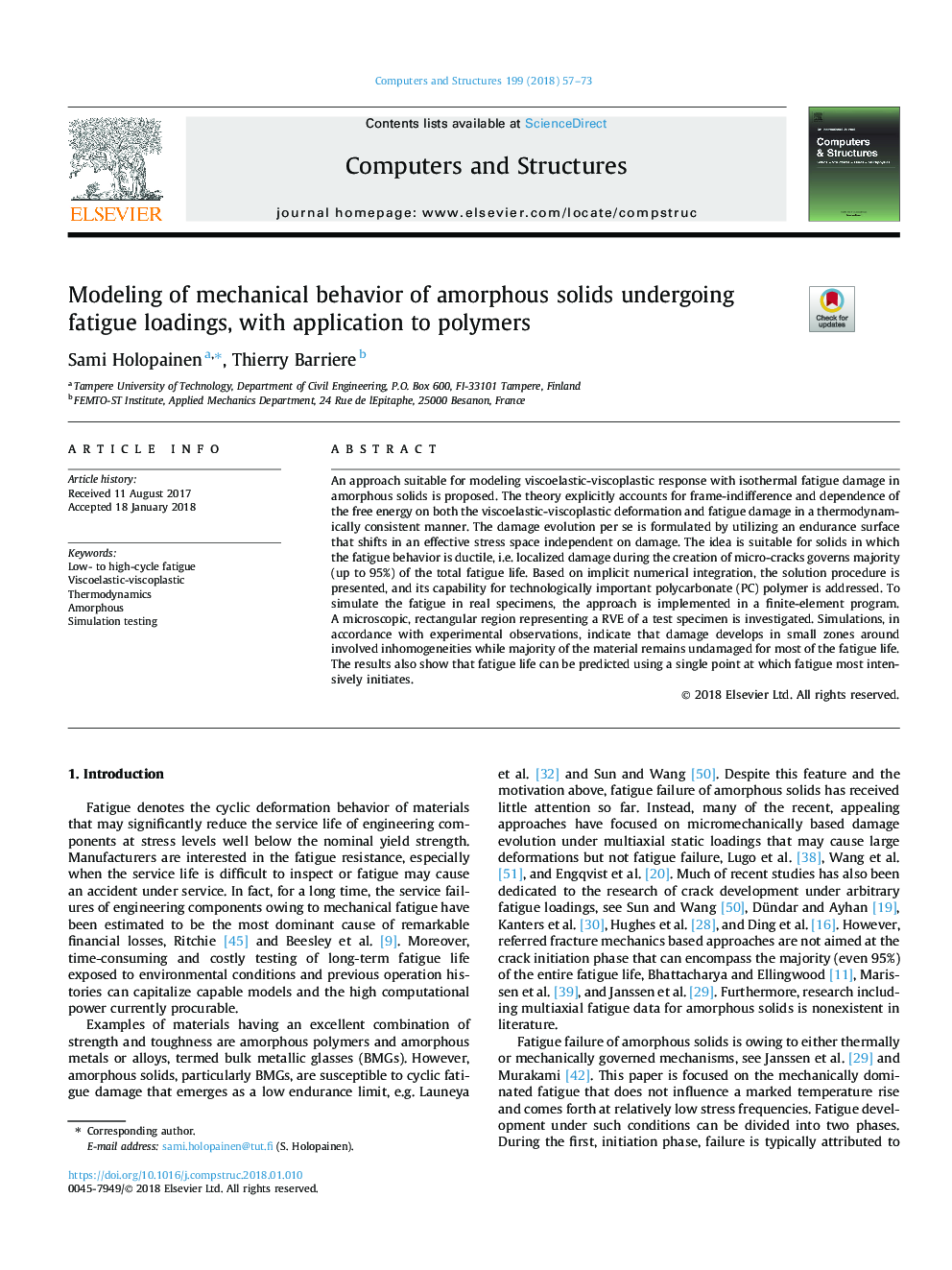| Article ID | Journal | Published Year | Pages | File Type |
|---|---|---|---|---|
| 6924180 | Computers & Structures | 2018 | 17 Pages |
Abstract
An approach suitable for modeling viscoelastic-viscoplastic response with isothermal fatigue damage in amorphous solids is proposed. The theory explicitly accounts for frame-indifference and dependence of the free energy on both the viscoelastic-viscoplastic deformation and fatigue damage in a thermodynamically consistent manner. The damage evolution per se is formulated by utilizing an endurance surface that shifts in an effective stress space independent on damage. The idea is suitable for solids in which the fatigue behavior is ductile, i.e. localized damage during the creation of micro-cracks governs majority (up to 95%) of the total fatigue life. Based on implicit numerical integration, the solution procedure is presented, and its capability for technologically important polycarbonate (PC) polymer is addressed. To simulate the fatigue in real specimens, the approach is implemented in a finite-element program. A microscopic, rectangular region representing a RVE of a test specimen is investigated. Simulations, in accordance with experimental observations, indicate that damage develops in small zones around involved inhomogeneities while majority of the material remains undamaged for most of the fatigue life. The results also show that fatigue life can be predicted using a single point at which fatigue most intensively initiates.
Related Topics
Physical Sciences and Engineering
Computer Science
Computer Science Applications
Authors
Sami Holopainen, Thierry Barriere,
